Basilica of Saint Mary Major
Contents
History
The Exterior of the Basilica
The Interior of the Basilica
The Basilica of Saint Mary Major, one of Rome's architectural and spiritual gems, will serve as a key pilgrimage destination during the 2025 Jubilee. Rooted in a history rich with faith and legend, this basilica will host thousands of pilgrims visiting Rome to celebrate the Jubilee, offering a unique experience of spirituality and devotion at one of the most emblematic sacred sites in the Eternal City
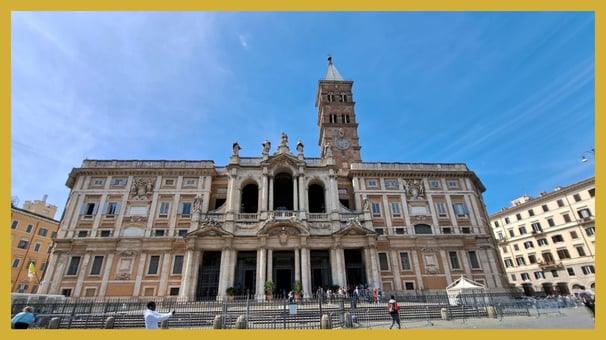

History
The Basilica of Saint Mary Major is not merely an architectural masterpiece of Rome, but is also enveloped in a captivating legend that delineates its mystical origins.
La leggenda
According to tradition, in 352 AD, a Roman patrician named John and his wife, who had no heirs, pledged their wealth to the Virgin Mary, hoping for a divine sign. On the night between August 4 and 5, in a visionary dream, the Virgin Mary appeared to both John and Pope Liberius, designating the place for a church to be constructed: a hill that would miraculously be covered with snow the next day. True to the vision, despite it being August, the Esquiline Hill was found draped in snow the following morning, and on this snowy canvas, the Pope mapped out the perimeter of the future basilica.
The Imprint of Sixtus III
The decision to construct the basilica was intimately linked with the decisions from the Council of Ephesus in 431 AD, where the dogma of Theotokos (Mother of God) was affirmed, marking a pivotal moment in Christian theology. Sixtus III was determined for Rome to have a sanctum celebrating this critical doctrine
Building commenced in 432 AD under Sixtus III's oversight, just after the conclusion of the Council of Ephesus. The Pope aimed to create a monument honoring Mary that also symbolized the triumph of Christian orthodoxy over the heresy of Nestorius, who contested Mary’s title as the Mother of God.
The initial structure was designed in the traditional basilical style, characteristic of early Christian churches, with a large central nave bordered by two side aisles, separated by rows of marble columns supporting structural beams, above which a clerestory illuminated by windows ascended. This assembly was crowned with a wood truss roof. At the eastern end, the apse, containing the episcopal throne and the high altar, became the focal points for liturgical worship.
Sixtus III's most significant addition to the basilica was the inclusion of magnificent mosaics, many still extant today and representing some of the earliest Christian art in Rome. These mosaics, found in the central nave, the triumphal arch, and the apse, depict scenes from the lives of Christ and the Virgin Mary, alongside Old Testament themes that symbolize and celebrate the maternal role of Mary and her integral importance in the Christian salvation narrative.
Subsequent Alterations
Over the centuries, the Basilica of Saint Mary Major has undergone numerous alterations and restorations. During the Renaissance and Baroque periods, the basilica was transformed significantly, further enriching its interior with artistic masterpieces. Among these transformations were the gilded ceiling created during the pontificate of Alexander VI, which paid homage to the first gold brought from America, and the introduction of new chapels that enhance the artistic and spiritual tapestry of the site.
Each year on August 5th, the Basilica of Saint Mary Major celebrates the Miracle of the Snow, commemorating both its legendary origins and its historical founder, Pope Sixtus III, who with foresight and devotion established one of the most revered Marian shrines in the Christian world. This sacred commemoration not only draws numerous worshippers and visitors but also highlights the profound connection between the basilica, the city of Rome, and Marian devotion at the heart of the faithful.
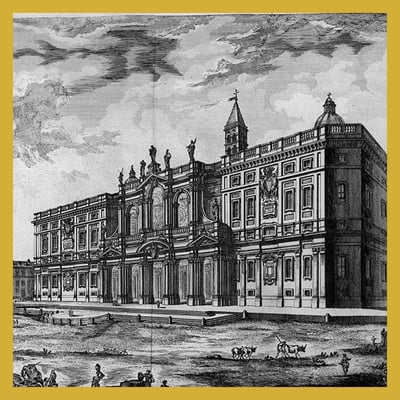

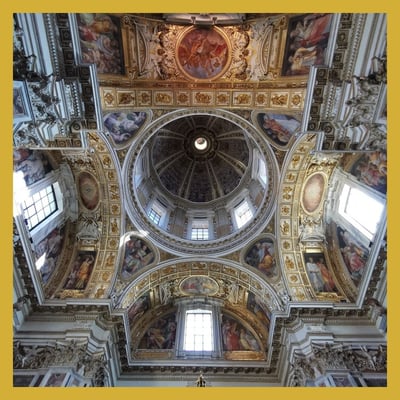

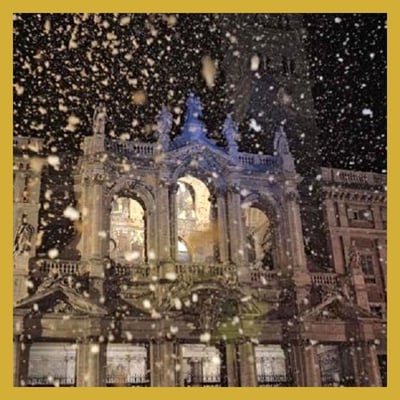

The Exterior of the Basilica
The exterior of the Basilica of Saint Mary Major showcases centuries of architectural and artistic developments that have made Rome home to one of its most iconic monuments.
The Facade
The present facade, masterfully designed by the celebrated architect Ferdinando Fuga, is an exemplar of Baroque architecture, completed for the Holy Year of 1750. This facade features two distinct orders and a central loggia that beautifully frames the sixteenth-century mosaics depicting the Miracle of the Snow, the founding event of the basilica.
The first order of the facade presents a portico with five linteled openings, which elegantly welcome both the faithful and visitors, imparting a strong sense of hospitality and grandeur. Above, the second order is crowned by a large loggia with three arches, with the central one being markedly taller and topped by a triangular pediment. This open area allows for views of the square and serves as a platform for blessings during major celebrations.
The side bell towers, mirroring each other, complete the visual symmetry of the building. These towers not only enhance the basilica's aesthetic profile but also perform a liturgical function, as their bells summon the faithful to prayer.
The Bell Tower
The bell tower on the right is particularly notable; as the tallest in Rome, it reaches 75 meters. Constructed in 1377 during the pontificate of Gregory XI, this bell tower is a distinguished example of Gothic architecture and acts as a visible landmark from many parts of the city. Its imposing presence not only accentuates the spirituality of the site but also bears witness to the various historical and artistic phases through which the basilica has evolved.
Positioned beneath the portico, on the right, the bronze statue of Philip IV of Spain, crafted in 1692 by Girolamo Lucenti from a Bernini design, adds an additional layer of art and history to the basilica’s exterior. This depiction of Philip IV, a pivotal figure in European history, deepens our appreciation of the intertwined narratives of art, power, and faith that define this sacred site.
The Holy Door
The Holy Door of the Basilica of Saint Mary Major, situated on the left side of the portico, is of paramount importance during the Jubilee Year. It is traditionally opened only during these special years, symbolizing a profound gateway to redemption and spiritual renewal. The bronze artwork adorning the Holy Door, crafted in 2000, is imbued with Christian symbolism, reflecting themes of reconciliation and new beginnings. The artistic design of the portal deftly merges modern elements with traditional bronze casting techniques, seamlessly blending into the basilica's Baroque architecture.
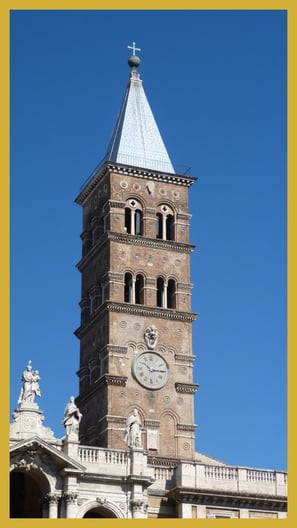

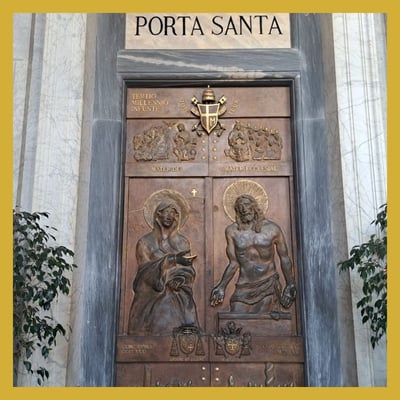

The Interior of the Basilica
The interior of the Basilica of Saint Mary Major serves as a veritable museum of Christian art, housing some of Rome’s oldest and most significant sacred artworks.
Mosaics, Ceiling, and Floor
A particularly extraordinary feature of the interior is the Paleochristian mosaics, especially those that embellish the central nave and the triumphal arch. Created primarily during the pontificate of Sixtus III (432-440 AD), these mosaics depict scenes from the Old Testament and the life of Christ, ranking among the foremost examples of Paleochristian art. They narrate the stories of figures such as Abraham, Isaac, Jacob, Moses, and Joshua — illustrating the enduring legacy of faith through generations and emphasizing the pivotal role of Mary in the divine plan of salvation.
The coffered ceiling in the central nave, commissioned by Alexander VI (Rodrigo Borgia, 1492-1503) and executed by Giuliano da Sangallo, is a masterpiece. Embellished with the first gold brought from the Americas — a gift from Queen Isabella of Castile — the gilded ceiling not only magnifies the interior's grandeur but also captures and reflects the natural light from the upper windows. This illumination enhances the spatial aesthetics and brings out the detailed architectural and artistic elements.
Dating back to the 12th century, the Cosmatesque floor is another notable feature of the basilica. Characteristic of many Medieval Roman churches, this flooring incorporates colorful marble pieces arranged into intricate geometric patterns. More than just visually arresting, the floor is rich in Christian symbolism, with motifs symbolizing eternal life and redemption.
The Chapels
The principal chapels, the Sistine Chapel and the Pauline Chapel, within the Basilica of Saint Mary Major are both architectural and artistic jewels. They mirror the deep devotion and elaborate religious history of this sacred site, resonating with centuries of faith and worship.
The Sistine Chapel of Saint Mary Major, which should not be mistaken for its more famous counterpart in the Vatican, was commissioned by Pope Sixtus V in 1585 and completed by Domenico Fontana in 1590. This chapel stands as a Renaissance architectural marvel, purpose-built to safeguard the Holy Sacrament and to act as a mausoleum for Pope Sixtus V himself. Constructed based on a Greek cross layout, it showcases a prominent dome that commands the structure, melding magnificence with spiritual resonance. The interior is lavishly adorned, featuring polychrome marbles, frescoes, and sculptures that enhance both the walls and the altars. Central to the chapel, beneath the imposing ciborium, is the Oratory of the Nativity scene, a focal point of significant spiritual and artistic merit.
The Pauline Chapel, brought into existence through the determination of Pope Paul V from 1605 to 1611, represents another beacon of artistic brilliance within the basilica. Engineered by architect Flaminio Ponzio, this chapel similarly employs a Greek cross design and is crowned with a large dome. Adorned with exquisite marbles, this sanctum includes an opulent main altar sheltering the esteemed Salus Populi Romani icon. This icon is a pivotal Marian symbol for both Rome and the global Catholic community. The frescoes and mural decorations, crafted by luminaries like Guido Reni and Cavalier d'Arpino, illustrate scenes from the Virgin Mary's life, adding layers of beauty and spiritual depth to this extraordinary chapel.
The main tombs
The Basilica of Saint Mary Major transcends its function as a worship space by also serving as a pivotal burial site for some of the Catholic Church’s most seminal popes and historic figures, enhancing the basilica's historical and spiritual essence.
Listed among the interred popes are pivotal figures in church history:
Pope Clement VIII (Ippolito Aldobrandini, pontificate 1592-1605), celebrated for convening the jubilee of 1600 and his significant role in the Edict of Nantes, which granted religious freedoms to Protestants in France.
Pope Paul V (Camillo Borghese, pontificate 1605-1621), remembered for his focus on strengthening papal authority and his patronage of the arts, which led to the commissioning of numerous artworks that adorn the basilica today.
Pope Clement IX (Giulio Rospigliosi, pontificate 1667-1669), renowned for his art patronage and efforts in liturgical reform.
Additionally, the basilica holds the remains of Gian Lorenzo Bernini, a towering figure in Roman Baroque artistry.
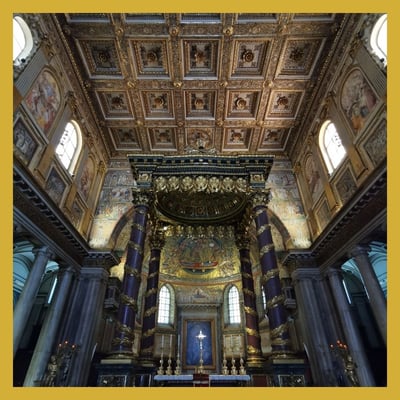

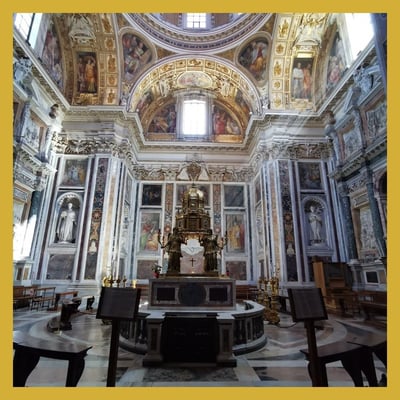

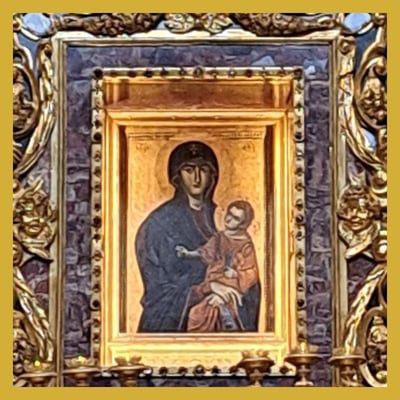

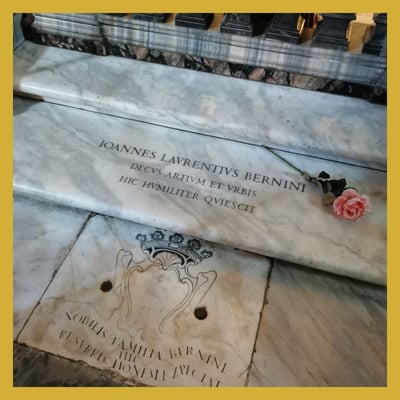

Drop us a line
Follow us
Discover the Jubilee
Experience the Jubilee
Jubilee locations
Get ready for the Jubilee
Rome and the Jubilee
